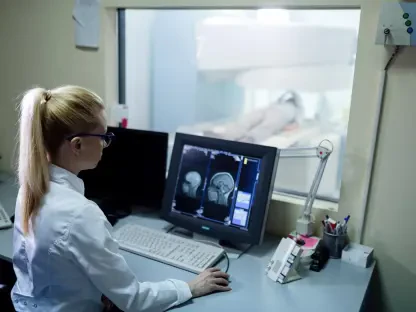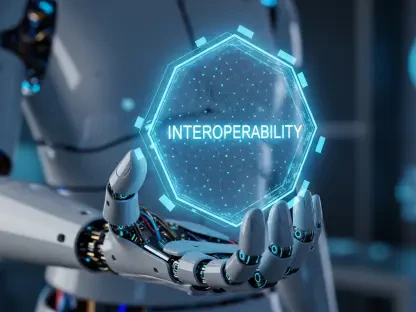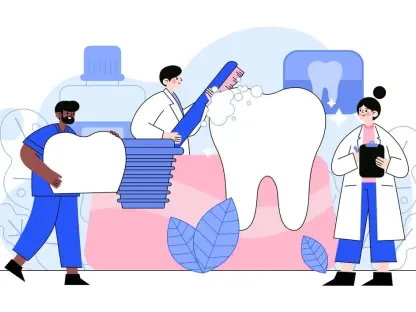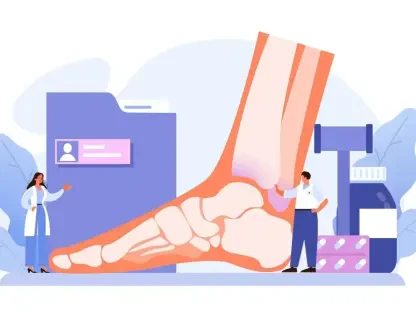The Department of Veterans Affairs (VA) is gearing up for significant changes under the new administration, with an emphasis on modernizing its Electronic Health Records (EHR) system, improving interoperability, integrating emerging technologies, and enhancing community care. The transition to President-elect Donald Trump’s administration has sparked renewed interest and commitment to addressing these critical areas. This article delves into the VA’s ambitious plans and the challenges it faces while aiming to improve healthcare services for veterans.
EHR Modernization Efforts
Restarting the EHR Initiative
VA Secretary Denis McDonough recently discussed plans to restart the electronic health records initiative in 2025, after the initial effort, which began under Trump’s first administration, was paused in 2023 for evaluation and improvement. The decision to restart the EHR program is driven by the need to address various operational challenges and improve the overall effectiveness of the system. Despite some advancements made during the initial phase, significant areas still require attention to ensure smooth functionality and staff satisfaction.
As part of the renewed effort, VA leaders plan to share their findings and progress with the incoming administration to leverage lessons learned and foster collaboration. McDonough emphasized the importance of learning from the previous deployment’s shortcomings and leveraging the insights gained to drive better outcomes. The primary objective of this initiative is to create a seamless transition of care for veterans, ensuring that they receive consistent, high-quality medical services as they move from military service to civilian life. This vision was initially set out during the first rollout under former VA Secretary Robert Wilkie and remains a top priority for the VA.
Goals and Challenges
The next stages of the EHR system’s deployment, slated to resume in mid-2026, are crucial in achieving the VA’s goals of enhancing healthcare delivery for veterans. This initiative not only aims to improve the technical aspects of the EHR system but also seeks to address operational inefficiencies and user dissatisfaction that emerged during the initial rollout. Achieving these goals necessitates a comprehensive approach, involving close coordination between VA officials, healthcare providers, and technical specialists.
One of the primary challenges is ensuring that the EHR system is user-friendly and meets the needs of both healthcare providers and veterans. Many users have voiced concerns about the system’s complexity and navigational difficulties, which can impede the delivery of timely and accurate care. Additionally, the VA must focus on enhancing data interoperability, enabling seamless sharing of health information between VA facilities and other healthcare providers. This is essential for maintaining comprehensive health profiles for veterans and ensuring continuity of care.
Enhancing Community Care Services
The MISSION Act and Its Impact
The bipartisan MISSION Act, passed during Trump’s first administration in 2018, has played a pivotal role in expanding access to community care clinics and improving the VA’s ability to attract and retain skilled medical providers. This legislation aims to offer veterans broader options and more timely access to healthcare services, including telehealth and urgent care facilities. The MISSION Act has been instrumental in providing veterans with more choices and convenience in accessing medical care, which is especially important for those living in remote or underserved areas.
The article highlights the importance of standardizing and regulating community care services to ensure that veterans receive consistent, high-quality care, regardless of where they obtain services. By implementing clear guidelines and standards, the VA can enhance the overall quality of care provided by community care clinics. This approach also helps in maintaining a uniform level of service, which is crucial for building trust and confidence among veterans in the healthcare system. Moreover, the MISSION Act’s emphasis on telehealth has significantly improved access to care, especially during the COVID-19 pandemic, when in-person visits were often limited.
Data Sharing and Interoperability
One of the key components of enhancing community care services is improving health data sharing and system interoperability between VA and community care facilities. This concerted effort aims to maintain comprehensive health profiles for veterans, ensuring that their medical histories are accurately maintained and readily accessible. By facilitating better coordination between different healthcare providers, the VA can ensure that veterans receive consistent and high-quality care, regardless of where they seek services. The ability to share health information seamlessly is vital for managing chronic conditions, monitoring treatment progress, and providing timely interventions.
Improving interoperability also involves addressing technical and regulatory challenges, such as standardizing data formats and ensuring compliance with privacy and security regulations. The VA must work closely with technology providers, healthcare organizations, and regulatory bodies to develop and implement robust solutions that enable smooth data exchange. Additionally, training healthcare providers on using interoperable systems is crucial to maximize the benefits of improved data sharing. By fostering a collaborative environment and leveraging advanced technologies, the VA aims to overcome these challenges and provide veterans with a more integrated and efficient healthcare experience.
Integration of Emerging Technologies
AI in Veteran Care
Under Trump’s first administration, the AI executive order launched the “American AI” initiative in 2019, marking a significant step toward integrating artificial intelligence (AI) into various sectors, including healthcare. The VA followed this initiative by developing the Trustworthy AI Framework in 2023, which aims to ensure the ethical application of AI in veteran care. Currently, the VA provides AI tools to its employees rather than directly to veterans, ensuring that human oversight remains integral to the process. This approach prioritizes risk assessment and human involvement, aiming to strike a balance between leveraging AI’s potential and maintaining ethical standards.
Dr. Kaeli Yuen emphasized the agency’s cautious approach to adopting AI technologies, highlighting the importance of thorough evaluation and risk mitigation. The VA’s focus on trustworthy AI is driven by the need to ensure that these technologies are used responsibly and effectively to enhance veteran care. By integrating AI tools into various aspects of healthcare, the VA aims to improve diagnostic accuracy, streamline administrative processes, and enhance personalized treatment plans. However, the overarching goal remains to augment human capabilities rather than replace them, ensuring that veterans receive compassionate and high-quality care.
Potential and Cautions
The potential of AI to revolutionize veteran care is substantial, but it also comes with its challenges and risks. Gilly Cantor of Syracuse University’s D’Aniello Institute for Veterans & Military Families highlighted the promise of AI to enhance interoperability and data standards while cautioning against over-reliance on technology. While AI offers numerous benefits, such as improved data analysis and predictive capabilities, fundamental issues like data integration and standardization need to be addressed for its full potential to be realized. This cautious optimism underscores the importance of a balanced approach that leverages AI’s strengths while addressing its limitations.
Cantor’s insights reflect a broader consensus that pragmatic, data-driven approaches are essential for the successful implementation of emerging technologies. The VA’s commitment to ethical AI usage involves continuous evaluation, stakeholder engagement, and transparent communication about AI applications and implications. By addressing these foundational challenges and fostering a culture of continuous improvement, the VA aims to harness AI’s potential to enhance healthcare delivery for veterans. This approach ensures that AI technologies are implemented in a way that maximizes benefits while minimizing risks, ultimately improving the overall quality of care.
Improving Veteran Outreach and Support
Communication and Benefits Awareness
Despite the administrative change, the VA is expected to build on its efforts to enhance communication with veterans, helping them understand and access their benefits more effectively. These efforts are crucial for ensuring that veterans are aware of the various programs and services available to them and can take full advantage of the support offered by the VA. Effective communication is also vital for addressing ongoing challenges, such as veteran suicides, which remain a pressing issue. The VA has pursued various outreach initiatives, such as the Mission Daybreak program, which emphasizes mental health awareness and resource connectivity.
The Mission Daybreak program aims to provide veterans with the information and resources they need to manage their mental health and seek help when needed. By raising awareness and promoting open communication, the VA hopes to reduce the stigma associated with mental health issues and encourage veterans to seek support. These initiatives also involve collaborating with community organizations, healthcare providers, and veteran service groups to reach a broader audience and provide comprehensive support. By fostering strong communication channels and building trust with veterans, the VA aims to create a supportive environment that encourages veterans to access the care and benefits they deserve.
Mental Health and Suicide Prevention
The article highlights the importance of addressing veteran suicides through comprehensive, public-health-driven approaches. The PREVENTS program, launched during Trump’s first term, exemplifies this approach by emphasizing the need for collaboration across government and private sectors to combat veteran suicides. Cantor’s insights reflect the article’s overarching narrative that bipartisan collaboration has historically driven progress in veteran affairs, fueling optimism for continued advancements. She stressed the importance of engaging communities to reach at-risk veterans, emphasizing that individuals often achieve better mental health outcomes through VA care.
Engaging communities in veteran mental health initiatives involves leveraging local resources, building partnerships, and creating a supportive network for veterans. This community-based approach is essential for addressing the unique challenges faced by veterans and providing tailored support. Programs like PREVENTS underscore the need for a coordinated effort that includes not only the VA but also other stakeholders, such as mental health professionals, veteran organizations, and policymakers. By fostering a collaborative environment and prioritizing mental health and suicide prevention, the VA aims to improve the overall well-being of veterans and reduce the incidence of suicide.
Strategic Policies and Community Engagement
Bipartisan Collaboration
The article meticulously consolidates various perspectives and insights from VA officials, academic experts, and historical precedents to provide a coherent narrative of anticipated developments. This comprehensive approach captures the core objectives and challenges facing the VA in 2025, effectively distilling complex information into a unified and detailed analysis. The emphasis on bipartisan collaboration highlights the importance of working together across political lines to achieve common goals and drive progress in veteran affairs.
This collaborative spirit has historically fueled significant advancements in veteran care, and the VA aims to continue this trend under the new administration. By fostering a culture of open dialogue and cooperation, the VA can leverage diverse perspectives and expertise to develop innovative solutions and address pressing challenges. This approach also involves engaging various stakeholders, including veterans, healthcare providers, policymakers, and community organizations, to ensure that policies and programs are comprehensive and effective.
Data-Driven Approaches
The Department of Veterans Affairs (VA) is preparing for substantial changes with the incoming administration, focusing on modernizing its Electronic Health Records (EHR) system, enhancing interoperability, integrating new technologies, and improving community care. The shift to President-elect Donald Trump’s administration has reignited a commitment to addressing these essential areas. As part of the VA’s ambitious plans, the agency aims to improve healthcare services for veterans by adopting a more cutting-edge and cohesive approach to health records and care delivery. This involves not only updating the existing systems but also ensuring that the new EHR system can seamlessly communicate and share data across different platforms and providers. Additionally, the VA is looking into the adoption of emerging technologies to streamline processes and improve overall patient outcomes. Despite these well-intentioned goals, the VA faces significant challenges, such as logistical hurdles, budget constraints, and the need for comprehensive training for staff to adapt to these new systems and technologies.









